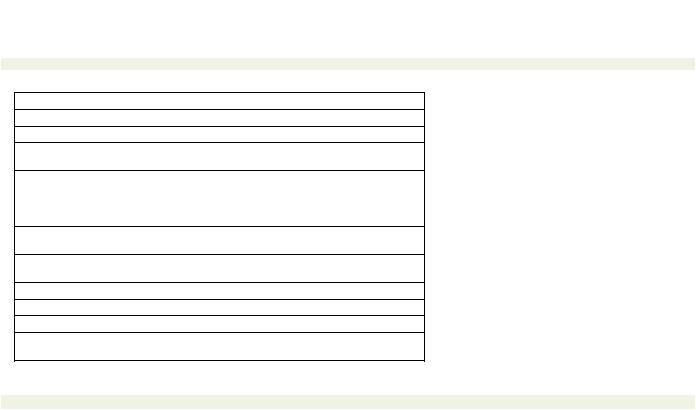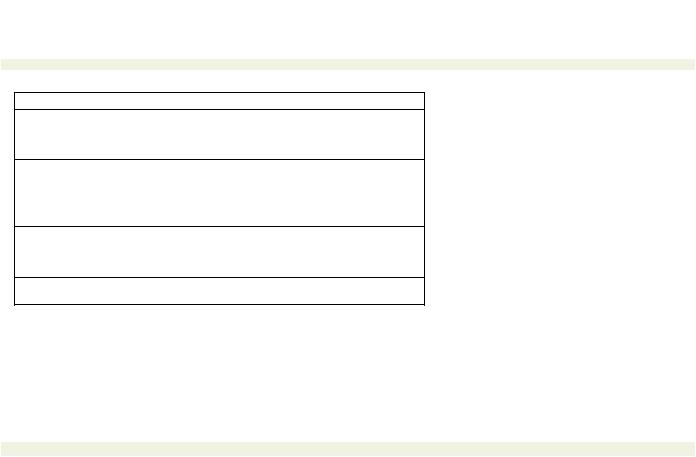
water quality and system
.pdf
< previous page |
page_21 |
next page > |
Page 21
will erode quite rapidly when exposed to runoff water. Clay, on the other hand, contains a "binder" that sticks and requires more energy to wash the soil away.
Erosion control is also a function of the volume of water and of the slope of the natural terrain. Erosion occurs when the energy of the water, a combination of its weight and speed, exceeds the resisting energy in the soil.
Methods Of Erosion Control - Erosion can be controlled by providing resistant energy to prevent runoff flows from taking the adjacent soil. Large rocks, stones or objects can be used, along with vegetation, rechanneling the water or providing underground pipe to carry the flow off the property. Any combination of these methods can be used.
Vegetation. Vegetation, in the form of grass, shrubs and trees, can be used to hold the soil in place until the worst of the runoff has passed. Landscape architects are the most knowledgeable in providing expert advice for vegetation and planting to reduce erosion from water runoff.
Rock. Large stones placed in the path of erosion will resist the action of the water. Large stone placement is called "rip rap." The size of the stones is a function of the flow of water. For lakes with waves these stones are sometimes two or three feet across. Another method of erosion control is the construction of rock "gabions." A rock gabion is basket of wire mesh or bars containing large stones. Gabions are usually about 4 if. cubed and contain rounded stones all larger than four inches across. Gabions will last several years and work well for intermittent flows. When the wire mesh rusts away, as it ultimately will, the gabions begin to break down.
Concrete. Concrete has proven its ability to resist erosion in many ways over many years. Concrete can be constructed in retaining walls, sea walls, or simply broken pieces can be placed similar to rip wrap. One of the more interesting uses of concrete is in "dolose." Dolose is formed from large blocks and looks very similar to children's jacks, only much larger of course. The advantage of dolose is that it has a tendency to snag other debris in the erosion and helps to anchor them in the pathway.
One old method was the use of abandoned car bodies. These worked fairly wellthey were easy to move to where needed and provided more than enough weight to do the job. However, car bodies rust and have oils and lubricants. Old car bodies are not legally allowed and their use would not be recommended today.
< previous page |
page_21 |
next page > |

< previous page |
page_22 |
next page > |
Page 22
Location Of Erosion Problems - Keys to locating areas of high runoff are gullies, high water marks, historical recollections and historical records. In recent years, some legal progress has been made at holding upstream managers responsible for concentrating runoff flows. A plowed field would absorb most of the rainwater, but when a facility converted the field to a parking lot, the water ran off and onto the adjacent property. Facility managers must take this responsibility into account when changing the nature of the lay of the land by constructing parking lots or other site developments that are impervious to water runoff. If nothing can be done about the runoff, the facility manager can seek the rights to let the water run off in the form of an "easement." An easement is the right to use somebody else's land for conveyance of runoff water. In some cases, the facility must construct a pipe, underground, that flows clear to a natural stream for runoff flows.
Utility Interface
Utility support can take the form of measuring flows or estimating total usage. In addition, local government city engineers or building inspectors know what type of rainfall intensity is recommended for their area. These types of details are resolved in facility design and planning processes.
The Next Step
Water management is the business of deciding what is necessary to supply the right amount and quality of water. In addition, after water has been used, management must decide how it is to be wasted and to make sure it has minimum impacts to others downstream. Facility managers coordinate their activities with local government officials to minimize these impacts and optimize the facilities opportunity.
< previous page |
page_22 |
next page > |

< previous page |
page_23 |
next page > |
Page 23
Managing the water on the facility is also a matter of conveying it at the correct pressure to where it is needed. In order to do this, pipes in conjunction with pumps and tanks are used. The next chapter, Piping Fundamentals, discusses the basic elements the facility manager uses to manage water and wastewater.
< previous page |
page_23 |
next page > |

< previous page |
page_25 |
next page > |
Page 25
Chapter 3
Piping Components and Systems
Pipes and the associated equipment form the heart of any water system. It is pipe and pipe fittings that transport the water to where it is used and carry it away again when it is wasted. Knowledge of water systems and their management cannot be successfully accomplished without a basic understanding of pipe, piping and pipe flow.
Pipe Talk
"Pipe consists of a long hole, mostly tubular, usually straight, sometimes twisty."
So began a humorous specification once passed around by plumbers for a good laugh. In fact, pipe is one of the truly great inventions of our modern age. Water and wastewater systems depend upon pipe because the delivery and removal of water is the result of installing pipes to carry the flows.
Pipes come in lengths and are fitted together at joints. Depending upon the pipe and where it is placed, different types of pipe and joints are used. Joints, like pipe, are selected for ease of construction, maintenance, life and cost.
Pumps are used to push water through the pipes and tanks. Tanks provide a storage space for water. Tanks can store fresh drinking water, hot water or raw, untreated waters. It is important that the tanks keep the separate types of waters apart from each other. Plumbing codes are designed so that pipe systems do just that.
< previous page |
page_25 |
next page > |

< previous page |
page_26 |
next page > |
Page 26
Valves are installed in pipes to control flows. Many types of valves are installed in pipe systems depending upon the need to regulate flow, maintain pressure or isolate components for maintenance.
Fixtures are those plumbing elements that interface between people and water or wastewater systems. Fixtures include faucets, toilets and other water devices where people and water come into contact.
Piping
For supply, pipe line sizes vary from one inch for a single family dwelling up to large utility lines of 36 inches. Larger sizes, which apply to aqueducts and utility services, continue up to 120 inches (10 ft. in diameter). The smallest pipe is usually considered to be 1/2-inch. Below this size, pipe is usually referred to as tubing. For water management, the smallest size is normally going to be 3/8-inch and serves bathroom sinks and water closets.
Pipe sizes increase in uniform dimensions because the mills where pipe is made uses common size dies and molds. Commercial pipe comes in the following sizes: 1/2", ¾", 1", 1-1/2", 2", 2-1/2", 3", 4", 6", 8'', 10", 12", 14", 16", 18", 20", 24", 30", 36" and up in six-inch increments beyond 36".
For a long specialty-sized pipeline, a mill might be willing to set up a special runfor example, 20 miles of one unique size could be fabricated. However, most designers have found that specifying the next larger size is more economical. Consequently, pipes are sized according to these common diameters.
Pipe Fittings
For changing the direction of pipe and for hooking pipe up to fixtures, "pipe fittings" are used. Fittings are common and are standardized throughout the industry. Pictures of typical pipe fittings
< previous page |
page_26 |
next page > |

< previous page |
page_27 |
The Facility Manager's 10 Questions
There are 10 questions the facility manager should ask the design engineer.
1.How much excess capacity is there in the pipelines for later growth?
2.What piping materials have been selected, what are the advantages and disadvantages of each, and how long will the selected pipe materials last?
3.What pressure and flow tests have been specified and how will I know if the pipes pass the tests?
4.Has the engineer prepared a list of recommended bidders, or what experience is the engineer requiring of the construction companies?
5.Will the pipes be sterilized after construction? if so, where will the chemically treated water from sterilizing be disposed?
6.If the pipes need to be tapped in the future for new service locations, how hard will this be and what will be the procedure?
7.What special corrosion protection will be necessary? How is it applied?
8.Is the pipe material guaranteed? Who is furnishing the guarantee?
9.Where are the flow meters going to be? How hard are they to get to?
10.What happens if the meter breaks? Will the water have to be shut off while the meter is fixed?
< previous page |
page_27 |
next page >
Page 27
next page >

< previous page |
page_28 |
next page > |
Page 28
are shown in Figure 3-1. The three most common types of fittings are tees, ells, and wyes (T, L and Y.) Just as the name implies, a "tee" is shaped like the letter T. Tees allow a pipes to be combined at a junction.
Like pipe tees, "ells" are used for pipe bends. All pipe ells are shaped like the letter L and allow direction changes in pipe. Ells can be set in the horizontal position, (looking aside), in the vertical position (looking up or down) or at other angles (halfway between up and aside). Ells for many systems can be either short radius or long radius. The advantage of long radius ells is there is less pressure lost through a long radius ell than a short radius ell. Usually drain systems use long radius ells, if there is room, to minimize the chance of plugging.
In a similar manner to tees and ells, "wyes" are used to change the direction of pipes. Wyes, so named because their shape is similar to the letter Y, are also used to change the direction and in joining of pipes. Wyes are most often used in drainage pipes instead of' tees, because the direction change is more gradual. In addition, wyes
allow drain unplugging tools to follow the direction of flow. One rule about fittings is that they must be the same material as the pipeotherwise, temperature and corrosion will cause a failure of the pipeline between the two dissimilar materials. For a change in materials, a special fitting sometimes called a dielectric union is used. These specially fabricated fittings are designed especially for transitioning from one type of pipe material to another.
A "coupling" is used to joint two lengths of straight pipe together. On some types of pipe systems, couplings are necessary. On others, the length or joint comes with one end ready to receive the end of the next one. The joints shown in Figure 3-1 are typical bell and spigot joints.
Finally, there are a number other specialty types of fittings. Plugs and caps close up the end of a pipe. (A plug is used to close a female end and a cap closes a male end.) Another common fitting is a reducer which is used to transition in size from one type to another.
Fancy fittings combine these major elements. For example, a tee can be a reducing tee where the sizes of the openings are different. Similarly, a reducing ell can change size from one end to the other. These specialty fittings are used for tight installations were there is not room to install two fittings. For example, a reducing ell would be used where there was not enough room to install an ell and a reducer.
< previous page |
page_28 |
next page > |

< previous page |
page_29 |
Figure 3-1.
Pipe fittings: ells, tees and wyes. Reprinted from Step by Step Guide Book on Home
Plumbing with permission of Step By Step Guide Book Co., West Valley City, Utah.
< previous page |
page_29 |
next page >
Page 29
next page >

< previous page |
page_30 |
next page > |
Page 30
Fittings can be purchased with any of the joints discussed later in this chapter, and many specialty fittings serve to change the type of joint from one type to another. For example, a fitting could be a bell on one end and screwed on the other. This would allow the pipe to be attached at one end to an appliance while the other has joints for the pipe. A typical example of this is where the water line taps into the common residential water heater. The water heater is usually a screwed fitting, while the copper pipe is a slip fitting.
It can be difficult for the facility manager's staff to locate special fittings that will have multiple combinations such as a reducing ell that has a slip joint on one end and is screwed on the other. These types of fittings can be obtained but they are rare and sometimes may take a few days to locate.
Piping Materials
Pipe is made from every conceivable material and it is used to carry materials much more sophisticated that water. Pipes are designed and used to carry acids and even poisons. But for most facility managers responsible for water management, pipes carry water. For water, pipe types boil down to the few essential ones listed here.
Pressure pipes carrying fresh water are made of the least expensive materials that will contain the pressures and the flows. Water and sewer pipes are made from concrete, ductile iron, steel, cast iron, clay, white plastic (polyvinyl chloride/PVC), black plastic, (acrylonitrile butadiene styrene/ABS), blue plastic, gray plastic (polybutylene pipe), copper and lead (lead being no longer allowed in the United States). Pipe choices should be made by engineering professionals familiar with this type of work, but the facility manager can direct the engineer to analyze the options and present them during initial studies if a renovation is being planned.
Overall, the system should provide the facility manager the optimum combination of price and function that results from judgment, analysis and experience of pipe life, cost, joint design, corrosion resistance, friction and pressure loss, hangers and supports.
For buried pipe, supply pipes are usually ductile iron. This pipe is strong, it resists water hammer, it is corrosion resistant, and it is flexible enough to bend slightly without breaking. Inside buildings, pressure pipes are made from steel or copper. The size at which copper becomes more attractive than steel is near the 3-4 inch
< previous page |
page_30 |
next page > |

< previous page |
page_31 |
next page > |
Page 31
Case Study: Polybutylene Piping System Loses Lawsuit
In an article in the Los Angeles Times dated October 25, 1994, the manufacturers of gray supply piping agreed to pay damages stemming from a class action lawsuit filed in Texas. In the settlement, manufacturers resulting from leaks from polybutylene pipes used in homes, apartments and businesses nationwide.
According to the Times article, Shell Oil Company, DuPont Company and Hoechst Celanese agreed to pay damages to members of the class who had used gray plastic polybutylene pipe advertised as a new product in the 1980s.
The problem with the pipe was that it was subject to chlorine attack and corroded, causing the leaks.
The suit was not finalized at the time of writing this book; the Times was reporting news of a tentative settlement, although the article indicated the court would make a final ruling late in 1995. The tentative settlement also agreed to cover future leaks for up to 16 years after installation under certain circumstances.
In a statement from the manufacturers printed in this article, the settlement does not affect
Polyvinyl Plastic pipe, which has provided adequate service for many years.
diameter pipe size. This is because the smaller copper fittings are less costly and easier to install than steel fittings.
Ductile Iron Pipe
Ductile iron pipe is specially manufactured for use in underground water supply lines but it can also be used for sewer pipe. It offers a good combination of corrosion resistance, strength and price. Ductile Iron pipe is relatively heavy compared to some of the other pipe types presented here, which is why it is not generally used inside buildings. Most ductile iron pipe is of the bell and spigot type, although special joints are sometimes used.
Steel Pipe
Steel pipe is also often used, both inside and outside buildings. Steel pipe in smaller sizes is usually screwed, or welded when in
< previous page |
page_31 |
next page > |
